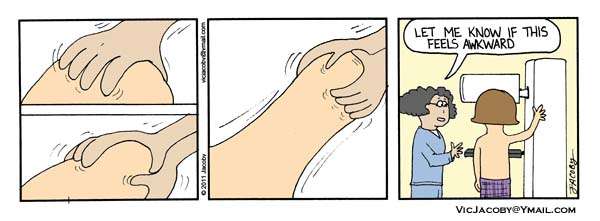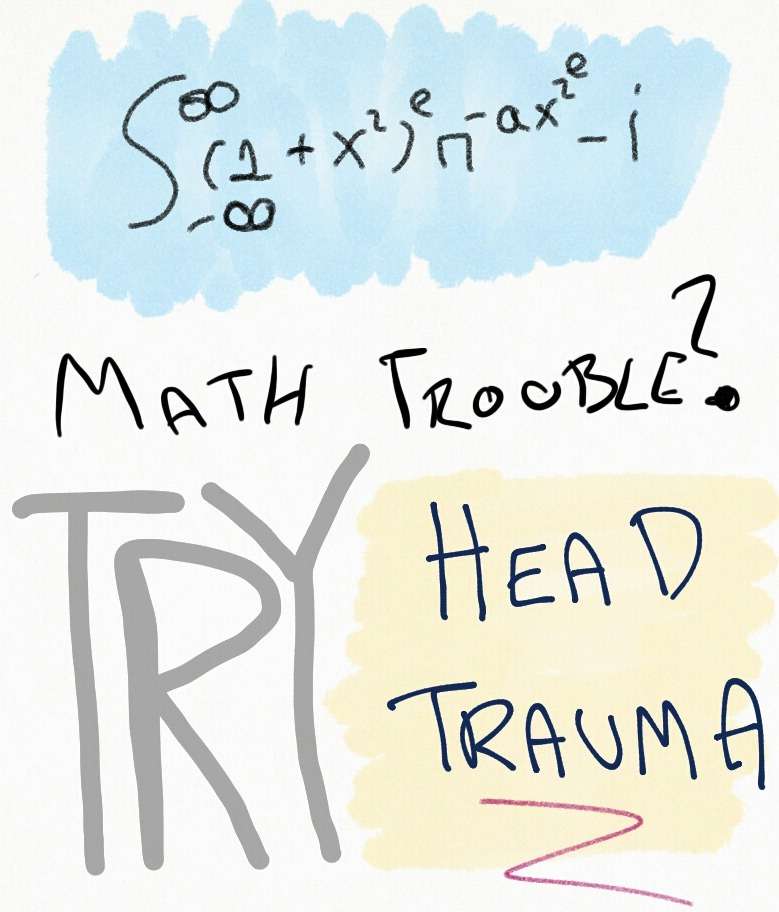A 60-Second Exercise That Boosts Goal Achievement By 20%
(Content note: this is an example of what I send out to email subscribers. You can sign up to receive more like it on any of the many forms scattered throughout the website, like the one at the bottom of this post.)
In 2002, Jason Padgett got into a fight. It was the fight of the decade, maybe the century. Not because Jason trounced his two assailants (he didn’t), and not because it was a fair fight — it wasn’t — but because of what happened the next morning.
But, wait, rewind a little. Let me tell you about Jason before everything changed.
Jason Padgett: Jock, Underachiever… Time Traveler?
The year was 2002 but, looking at Jason, you wouldn’t know it.
It was as if he’d been beamed straight from the 80s. A grungy time-traveler left stranded in the future, perhaps a consequence of an evil genius’s twisted revenge plot gone awry.
His blonde hair was cut into a mullet.
Attire: t-shirt with ragged, cut-off sleeves — as if he’d gnawed them off himself, like your dog might when left alone, bored. And the finishing touch, transforming him from trucker-stop chic into a form of trailer-park fashion so common you’d mistake it for an official uniform: he tucked his browning white tee into tight, faded jeans.
Plus a leather jacket. The leather jacket.
Just as The Lord of The Rings hinged on the whims of The One Ring, Jason’s story hinges on The One Leather Jacket.
At 31, with a daughter, he looked almost like an awkward teenager, except — barring Mike Tyson and steroids — I’d never seen a teen so well-muscled.
His hobbies included drinking beer — the existence of which, he liked to say, implied that there must be a God — skydiving, cliff-jumping, and thrill seeking generally.
He’d bounced around college for a while, but books were not his scene. In his own words, “I cheated on everything, and I never cracked a book.”
At least, that was Jason before the attack.
The Attack: When A Bar Fight Is A Blessing
The attack happened on Friday the 13th — a superstitious day, to be sure. If Jason had stayed in, he wouldn’t have ended up in the hospital.
My grandmother likes to say that the one week when she doesn’t play the lotto will be the one week that her numbers are called.
For Jason, if he’d stayed in and avoided the hospital, he would have missed out on the equivalent of a winning lottery ticket.
It happened at a karaoke bar near his home.
Two men attacked him from behind, punching him in the back of the head. The blows knocked him to the ground.
They then kicked him until he handed over his prized leather jacket. Worth maybe, if we’re being generous, 40 bucks on eBay.
An exchange more than worth it for Jason.
He ended up in the hospital, with a concussion and bruised kidney, but they released him that same night.
When he awoke the next morning, everything was different.
Jock Today, Savant Tomorrow
Today, Jason is one of 40 known cases of acquired savant syndrome. He sees mathematics. He can draw complicated geometric fractals by hand.
When the sun glints, he sees the arc.
Before, he worked at a furniture store.
Now, he’s an aspiring number theorist and an artist.
He draws what he can see and then sells it. He’s even written a book about the experience, Struck By Genius, with an upcoming adaptation for the silver screen.
All because someone punched him in the back of the head.
That’s what I want to be. The convincing fist that transforms you into a number theorist.
Except, no, maybe that’s not right.
…I know.
I want to be the friendly surgeon that communicates with you via email. I teach you how to remove a spleen, and then you, kitchen knife in hand, do it yourself.
Yeah. That’s who I want to be. Email-spleen-remover guy.
The Toughest Part of Behavior Change: Remembering to Change
For Jason, radical behavior change was the result of someone striking him in the back of the head.
For you and me, that sort of change is decidedly more painful than a concussion, as anyone who’s attempted to lose weight can tell you.
Let me know if this scenario sounds familiar.
You want to change something about yourself.
Maybe you want to be friendlier.
Let’s say you’ve read about operant conditioning and positive reinforcement and you think, hey, this just makes sense — I should treat the people around me better.
So this becomes a goal: treat your colleagues better.
And, to do this, your plan is not more cowbell, but more compliments. Criticism sucks. No one likes receiving it.
Solution: more positive feedback.
So you set this goal.
And then you forget about it.
You go to work, critique people like usual, come home, and then realize: I was going to make a change.
But I didn’t even think about it when the opportunity was present.
I just kept acting out of habit, on autopilot, going through the same motions. Like Sisyphus, doomed to repeat my sentence for eternity.
All intended behavior change suffers from this flaw: forgetting to execute the new behavior when its applicable.
Maybe you want to start taking the stairs more, but every night you’re so tired when you check into your apartment that you opt for the elevator.
Or you want to wake up earlier, but every morning you silence your alarm.
What can be done? Is it hopeless?
No.
If-Then Rules Are A Real Life Cheat Code
…what if I told you that life has cheat codes?
That there are certain techniques you can use to make it more likely that you’ll achieve anything you want? Fully-general goal techniques that will increase your probability of success?
Sounds pretty good, right?
These exist.
They’re buried in textbooks, in scientific papers, across a dozen disciplines. Psychology, cognitive science, operations research, game theory, economics, and more.
Today’s email is about one of those cheat codes.
A way to solidify and increase the odds of permanent behavior change.
A tool to move you from who you are now, to who you want to be.
Today’s email is about if-then rules.
If-Then Rules Prevent Breast Cancer

Comic by Vicki Jacoby.
Let me tell you a story. About boobs.
Orbell, Hodgkins, & Sheeran, 1997 rounded up a bunch of women, who all shared the same goal.
They wanted to perform a breast self-examination, or BSE, sometime during the next month. You know what I’m talking about: where women feel for lumps in order to detect breast cancer.
The authors of the study split participants into two groups.
The first group recited an “implementation intention”, which is just newly invented jargon for “if-then rule.” These are of the form, “If [situation], then [behavior].”
For instance, a participant in the study might form an intention like, “If I’ve just finished washing my hair in the shower, I will perform a breast self-exam.”
Or maybe, “If it’s the first Wednesday of the month, I will perform a breast self-exam while changing into comfortable clothes after work.”
The second group didn’t create any if-then rules — they just had the goal of performing a breast self-exam.
The result?
100% of the if-then group successfully performed a breast self-exam, while only 53% of the second group did so.
With one simple if-then rule recited in probably less than 60-seconds, participants doubled their odds of goal success.
If-Then Rules Are Very Effective, Even Across Different Circumstances
The effectiveness of if-then rules for behavior change has since been confirmed many times, in many circumstances. They’ve been used to:
- Increase the likelihood of implementing a vigorous exercise program (29% -> 91%.) In contrast, an entire motivational intervention that focused on the danger of coronary heart disease raised compliance merely 10%, from 29% to 39%.
- Hasten activity resumption after joint replacement.
- In one study, forming if-then rules for eating healthy foods reliably increased the rate at which people did so.
- In another instance, drug addicts undergoing withdrawal were given the task of creating a brief resume before 5pm that evening. Of those who didn’t form implementation intentions, none were successful. Of those who did, 80% were successful.
- This effect has even been observed in those with damage to the prefrontal cortex — the front part of the brain, sometimes called the seat of reason. Forming the implementation intention to work quickly when given a certain stimulus — in this case, the number 3 while completing a computer task — increased the speed at which participants did so.
- Here’s my favorite example: implementation intentions can make you less sexist. In one study, participants formed the if-then rule, “If I see a woman, I will ignore her gender!” The results? No automatic activation of stereotypical beliefs.
- This has since been replicated both for the old (“Whenever I see an old person, I tell myself: Don’t stereotype!”) and the poor (“Whenever I see a homeless person, I ignore that he is homeless.”)
At least 94 similar studies have been conducted, and since integrated into a meta-analysis (n=8461). The analysis found that implementing this extremely simple technique had an effect size of d=.65.
What does that mean?
Let’s say that, when it comes to achieving goals, you have exactly average performance — 50% of people do worse than you, and 50% do better. (This is just an example. Given that you’ve read this far, you’re almost certainly above average.)
Given an effect size of .65 for implementation intentions, this would mean that — by implementing relevant if-then rules — you’d improve your goal-achieving-ability by .65 standard deviations.
Which is enough to outperform 20% more people. Just by adding these if-then rules, an average goal achiever would end up outperforming 70% of the population.
Oh, and here’s a neat tip: if-then rules can themselves be supercharged. Stellar (1992) enhanced goal achievement by having participants form an implementation intention, and then adding “I strongly intend to follow the specified plan!”
You should use if-then rules – Here’s how
I’m excited about this technique.
It costs nothing to implement, and it will very probably have a substantial impact on your life — if you bother trying it out.
Here’s how: Come up with some if-then rules, either write them down or say them aloud, and voila!, suddenly you’re more likely to achieve whatever it is that you want.
Plus, you can apply this to anything. It’s a fully general technique.
So why wouldn’t you?
The general template is straightforward: If [situation], then [behavior]. The idea is to pair a concrete scenario with a behavior you want to enact.
Here are some examples:
- If I’m mindlessly browsing the web, refreshing Reddit, I will instead pick up and read a book.
- When I go out to eat with friends, I will order a salad.
- If I have just finished dinner, I will write 500 words.
- If I’m writing and interrupted, I will ignore it.
- If I add something to my Amazon cart, I will wait 24 hours before purchasing it.
- When I get my paycheck, I will set aside 10% as savings.
And my personal favorite: if I’m attacked at a bar, I will become a number theorist.
P.S. You’ve read this far – want more? Get articles like this emailed directly to your inbox, just fill out the form below. Thanks!
Sources
Orbell, Sheina, Sarah Hodgkins, and Paschal Sheeran. “Implementation intentions and the theory of planned behavior.” Personality and Social Psychology Bulletin 23.9 (1997): 945-954.
Gollwitzer, Peter M., and Paschal Sheeran. “Implementation intentions and goal achievement: A meta‐analysis of effects and processes.” Advances in experimental social psychology 38 (2006): 69-119.
Gollwitzer, Peter M. “Implementation intentions: strong effects of simple plans.” American Psychologist 54.7 (1999): 493.
Steller, Birgit. Vorsätze und die Wahrnehmung günstiger Gelegenheiten. [Implementation intentions and the detection of good opportunities to act]. tuduv-Verlag-Ges., 1992.


